Auto-Sleepers Motorhome Buying Guide
Auto-Sleepers is a mainstay of the British motorhome industry. It prides itself on making quality and desirable British-built motorhomes for the more discerning customer who prefers traditional British layouts and design.
The Cotswolds-based firm is once again the number one seller of van conversions in Britain. It now retails over 400 van conversions per year (mainly based on the Peugeot Boxer plus a few Volkwagen-based models) out of a total annual build of 800 vehicles.
Four years ago, it was producing just 500 coachbuilts and campervans combined but it has seen steady growth across both sectors.
New Auto-Sleepers for 2017
Auto-Sleepers launches its first motorhome with an island bed
When the Auto-Sleeper Corinium debuted back in February with French bed and twin singles layouts (each with a full-width end washroom), the floorplans for Auto-Sleepers’ largest ever Peugeot-based models came straight from the Mercedes Burford. But, there was always the promise of a third option, and now it’s here – the company’s first island bed offering – called the Corinium RB.
The Cotswold-based company hasn’t simply copied the continental competition, though. Here is a vehicle of slightly different priorities, and with a traditionally British feel. What does that mean? Well, there’s just an all-in-one washroom but a generous galley to compensate. And, although there’s no separate shower, the bedroom is very much a room in its own right.
In fact, the bedroom is the new Corinium RB’s key selling point – Sales Director, Dave Williams, says the company set out to make it “the centerpiece of the vehicle”. There’s no garage under the bed (storage here is accessed internally only), so there are no steps in the bedroom floor (in fact, the floor is flat right through to the cab seats). And, while bedside wardrobes are de rigeur, a chest of four drawers each side is unusual to say the least. There’s good space around the 1.94m by 1.22m mattress, too, even before you slide back the bed to sit up and take a leisurely breakfast.
Forward of the bedroom door, on the offside, the RB has a long galley with full cooker, microwave and under-counter 105-litre fridge with automatic energy selection – plus plenty of worktop. And that’s before you deploy the free-standing table, after extricating it from its neat slide-out compartment. Lounging is on two side-facing (virtually 4ft-long) settees, or one of those benches can be replaced by a half-dinette if you require rear travel seats.
The chassis is a Peugeot Boxer/Al-Ko combination in the latest 2-litre 160bhp Euro VI guise, with a Fiat Ducato with Comfort-Matic gearbox as a cost option. A Mercedes-based version of the new layout is expected to follow in around six months.
The Corinium RB is expected to have a retail price of around £66-67k.
Across the rest of the range, the move to Euro VI will see Peugeot prices rise by £1,500. The first of the new models have just arrived on dealer forecourts, but don’t expect to see a raft of other changes. Peugeot cabs get a leather steering wheel and gear lever gaiter but, basically, the Auto-Sleeper range is carried over with merely some fine-tuning of specification. However, Stanway and Fairford models will see improved bed make-up with fewer cushions.
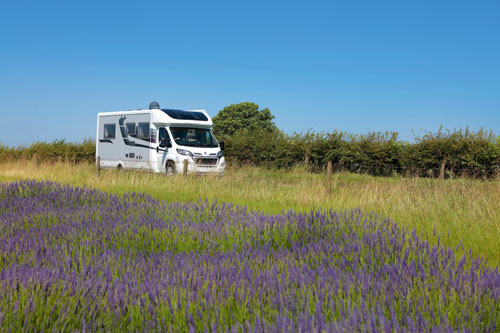 |
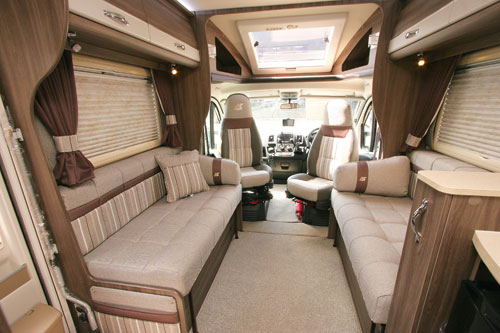 |
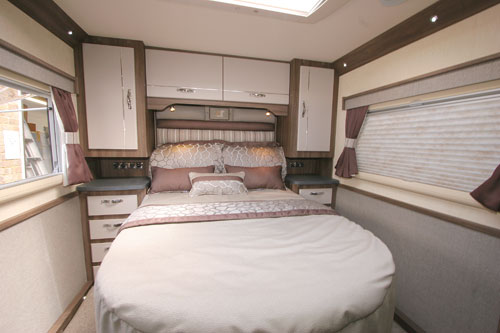 |
Used Auto-Sleepers Top Tips
Auto-Sleeper Clubman
FROM £10,000 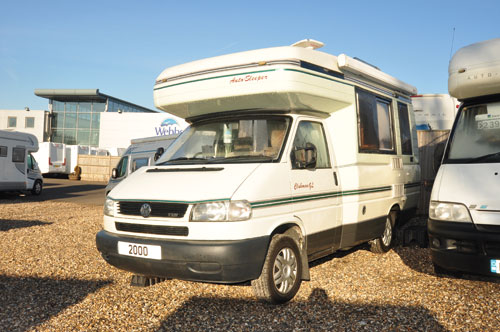
BASE VEHICLE Volkswagen Transporter T4/T5
ENGINES 2-litre and 2.5-litre petrol, 2.4-litre diesel, 2.5-litre turbo-diesel
LENGTH 5.32m, later 5.52m GROSS WEIGHT 3,300kg
PRICE WHEN NEW £33,029 (1998), £35,930 (2003)
Few dealers’ used sales lists would be complete without at least one Auto-Sleeper model, although for buyers the question is which one to choose?
We’ve gone for three, kicking off with the much-missed Clubman, a peerless little motorhome that was built using a monocoque coachbuilt body but which, because of that, came at a price. We’ve gone for the Volkswagen-based Clubman, a compact coachbuilt made before the trend took on the massive significance it has today. With roots going all the way back to similar coachbuilts on the Bedford CF, when it was also called Clubman, the Volkswagen Transporter T4-based version was unveiled in 1993, continuing pretty much unchanged until the T5 base came along in 2003. Early examples sometimes had petrol engines, although the pick of them all was the 102bhp 2.5-litre turbo-diesel.
The Clubman was only ever a two-berth as far as travel was concerned (the similar Gatcombe offered an extra belted rear seat), although Auto-Sleepers did offer the option of boards to make a double bed in the overcab section (in lieu of lockers). In all probability, whichever option was selected, it was with storage uppermost in mind – as a bed, it made for a huge cavern area for stowing larger (but light) items!
Overall dimensions were deliberately kept small to complement the VW and the sheer drivability of the T5 was a key attribute, allied to that last-a-lifetime coachbuilt body. But it was its high price that did for the Clubman more than anything else, although that – in turn – is what helps make it such a sought after secondhand buy.
Auto-Sleeper Warwick
FROM £29,995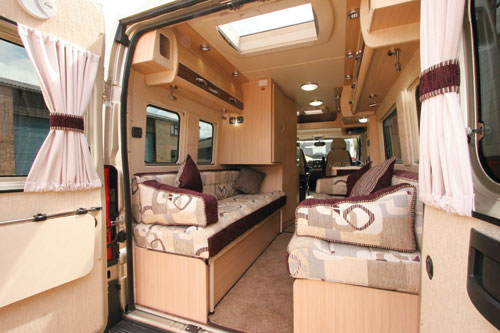
BASE VEHICLE Peugeot Boxer
ENGINES 2.2-litre 120bhp, 130bhp or 150bhp LENGTH 5.99m (Duo), 6.36m (XL)
GROSS WEIGHT 3,500kg
PRICE WHEN NEW £38,750 (2008), £47,025 (2013)
You can’t help thinking even Auto-Sleepers has been more than pleasantly surprised by the success of the Warwick. Introduced back in 2007 when a rear lounge van conversion was seen as something of a gamble, it was the first Auto-Sleeper van conversion with a rear two-settee lounge.
It was based on the Peugeot Boxer van with athermic glass windows (as opposed to the double-glazed acrylic units favoured by other converters) and was, of course, up to the usual Auto-Sleeper standards in terms of build and specification. That even included an ironing board on the original design!
Things kicked off when the 5.99m-long Warwick Duo emerged in 2008. This has been up at the top of the Auto-Sleeper van conversions sales table ever since – where its nearest rival is the Warwick XL, using the extra-long (6.36m) Boxer van. Crucially, there’s a key difference between the Duo and the XL mid-‘van, with the kitchen and washroom switching sides – the latter in the XL having space for a separate shower cubicle.
Auto-Sleeper Nuevo
FROM £18,000 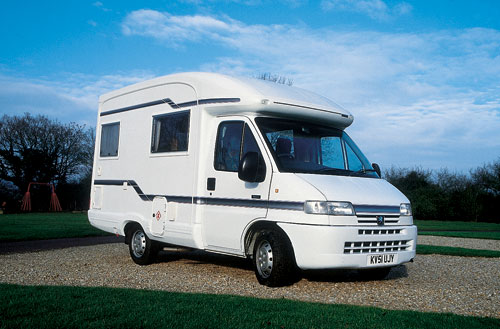
BASE VEHICLE Peugeot Boxer
ENGINES 1.9-litre 84bhp, 2.2-litre 130bhp and 150bhp
LENGTH 5.71m
GROSS WEIGHT 3,300kg
PRICE WHEN NEW £28,065 (2001), £32,782 (2007)
Auto-Sleepers was well ahead of the downsizing curve when it introduced the Nuevo in 2001. Although it’s stayed true to its compact coachbuilt routes, you need to know there have been a few significant bodywork changes over some very successful years for a vehicle that’s still a key part of the Auto-Sleeper portfolio today. Indeed, it’s one of a small band of models that successfully made the jump from the previous Peugeot Boxer chassis (shown above) to the current version.
Always Peugeot Boxer-based, early models came with the 1.9-litre turbo-diesel engine but, from 2002, the 2.2HDi unit was the norm. From last November, though, 150bhp has been the standard fitment, with Auto-Sleepers now also offering the option of a switch to a Fiat base so that Comfort-Matic auto transmission can be supplied.
A slightly strange move by Auto-Sleepers was the introduction of a taller body, circa 2010, where a flush-fitting awning was incorporated. Also around 2010, Auto-Sleepers announced the slightly larger Nuevo II, badging the smaller model Classic. Buyers voted with their wallets in both “if it ain’t broke don’t fix it” cases. Today, the ES model is a four-berth overcab design, while the EK stays truer to its original roots as a two-berth low-profile.









Recent Updates
Engine management lights: all you need to know
What is the engine management light? What does it mean, and what do I have to do? ...
Motorhome air suspension: all you need to know
Motorhomes are heavy and the additional weight of equipment and height of the bodywork can increase the loads ...
Motorhome WiFi: how to get better motorhome internet
Staying connected on the move is more and more essential, so relying on campsite WiFi isn't an option – here ...
A class of their own - our guide to A-class motorhomes
Thinking of trading up to an A-class, or even going straight to the top of the motorhome tree? We guide you ...
Explore overseas on a motorhome dream tour
Enjoy exotic travel in a campervan or motorhome by hiring, swapping with someone else or exporting your ...
Motorhome water systems: everything you need to know
On-board water is an important part of every motorhome – here’s everything you need to know ...
Campervanning in Europe: what you need to know
Whether you're planning a leisurely drive through the French countryside, navigating bustling city streets in ...
Campervan security: all you need to know
With thefts on the increase, it’s important to know how to keep your campervan secure and prevent campervan ...
Campervan furniture: everything you need to know
Our campervan experts guide you through all the essentials for your campervan, including tables, chairs, ...
Campervan finance: how to fund your purchase
Here we look at the different types of campervan finance available, to help you decide what’s the best option ...
Other Articles
Britain’s best used motorhomes
Want a great motorhome without paying the premium for a new one? Here's a guide to the best you can get in the pre-owned market for each layout, ...
Which motorhome? Choosing the perfect motorhome for you
Choosing a motorhome or campervan is one of the biggest buying decisions you’ll ever make, so it's important ...
Campervan washroom essentials: stay fresh on the road
Our guide will take you through the campervan washroom essentials you'll need so you're well-prepared for ...
Dogs in campervans: all you need to know
Follow our advice and your dog will enjoy campervanning as much as you do ...
Electric campervans: all you need to know
Our guide will take you through everything you need to know about electric campervans and what the future ...
Motorhome electrics: a complete guide to your motorhome electrical set-up
Motorhome electrics can dramatically enhance the convenience and comfort of your vehicle – but they can be ...
Lighting for campervans: all you need to know
We guide you through all the lighting options available for you and your campervan, including interior ...
Electric bikes for motorhomes: our ultimate guide
Read our comprehensive guide to electric bikes for motorhome owners, helping you add electric power to your ...
Our guide to 'cheap' motorhomes in 2024
If you're on the hunt for an affordable new motorhome, this is the best place to start – we've rounded up a ...
Campervans in winter: all you need to know
Here's your guide to preparing your campervan for the colder months, whether you will be using it or putting ...